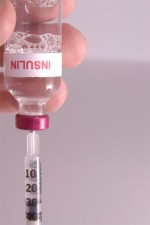 Post Classifieds
Post Classifieds
Binge Drinking
Binge drinking is an often times overlooked public health problem. While the dangers of drinking while driving and long term alcohol abuse are well publicized, the binge drinking phenomenon is generally only examined when a tragedy has occurred. Drinking too much, which encompasses binge drinking, causes more than 79,000 death annually and exists as the leading cause of preventable death in the country (Centers for Disease Control, 2011). Over 15% of adults report binge drinking practices and the most common individuals partaking in the behavior are men 18-34 (CDC, 2011). College students, within 18-34 age parameter and who also generally living away from home for the first time, are also high risk for binge drinking activities. From parties to fraternity based hazing, binge drinking is essentially an ingrained portion of collegian culture. Though this is a dynamic that many universities would like to ignore or not promote, lifestyle is present on virtually all college campuses and it is reinforced in population culture.
Binge drinking is described by the Center for Disease Control and Prevention as drinking 5 or more alcoholic drinks within a short period of time. For women, the number is 4 or more drinks in a short period of time (CDC, 2011). The number is lower for women because they are smaller than their male counterpart. A human's body weight has a great deal to do with their ability to metabolize alcohol: as a result, the two differing sets of parameters have been established to identify the process. More specifically than the CDC highlights, however, is the purpose of binge drinking. Binge drinking is a process that is less about enjoying an alcoholic beverage and more about experiencing the intoxicative effects of the alcohol. To get the maximum effects, binge drinkers choose to consume large amount of alcohol in a shorter amount of time. This gets the drinker drunk faster than they would if they would spread out the same amount of drinking over a longer period of time. The human body can only consume so much alcohol before it becomes toxic to their system. In addition to binge drinking potentially killing the person from the effects of the alcohol alone, the practice is also linked to other high risk behaviors that are matters of public health consequence.
Awareness is one of the main constructs that can be used to fight the binge drinking phenomenon. With the practice not being labeled as a public health emergency and college student associating it with college behavioral practices, many individuals are simply not aware of the dangers associated with the practice. Universities and public health organization cannot afford to ignore the problem. According to the CDC (2011), stakeholders in the binge drinking phenomenon should be promoting programs to prevent binge drinking, track trends in binge drinking, evaluating policy effectiveness, reduce alcohol marketing to youth and grow partnership between schools, community organizations, law enforcement and public health agencies.
By using connectivity of major agencies, a more efficacious environment to deter binge drinking can be facilitated. While major stakeholders in the process should be doing all they can to reduce the phenomenon, binge drinking still remains a personal choice. As a result, the most effective tool for preventing binge drinking related consequences for individuals is to: choose not to binge drink, encourage others not to binge drink, not to drink and drive, participate in community efforts to prevent underage drinking and to talk to their health care providers in those instances when they realize they are drinking too much (CDC, 2001). Binge drinking is a public health crisis, however, is a preventable problem and by changing the cultural paradigm associated with binge drinking, a more responsible alcohol consumption situation can manifest.
Reference
Center for Disease Control and Prevention. (2011). Binge Drinking. Retrieved from htt://
www.cdc.gov/vitalsigns/BingeDrinking?
Get Top Stories Delivered Weekly
More thebridgenewspaper News Articles
- Sucking Blood for the Wicked Wellness Week
- Recreational Center Hosts Fall 2011 TAMIU Combine
- Dance, Fun, and Health= ZUMBA
- Insulin Resistance Syndrome
Recent thebridgenewspaper News Articles
Discuss This Article
MOST POPULAR THEBRIDGENEWSPAPER

Top 5 Essential College Apps By Tina Gomez, Senior Reporter

Donuts a Call Away By Tina Gomez, Senior Report

FEAR is Coming By Judith Mae Aguilar, Senior Reporter

New Options for Laredo Foodies By Judith Mae Aguilar, Senior Reporter
GET TOP STORIES DELIVERED WEEKLY
FOLLOW OUR NEWSPAPER
LATEST THEBRIDGENEWSPAPER
RECENT THEBRIDGENEWSPAPER CLASSIFIEDS
OUTSIDE THE LINES
- Moving Resources For Military Families
- Historic Agreement Signed By Red Cross and Armed Forces
- Salonpas® Brand Stands the Test of Time
- Tips to “Yard Your Way” This Spring
- Upgraded Upstate Power Grid Will Deliver a Smarter,...
- A Story To Sing About
- The Gap in Gum Care: Why Caring For Your Teeth’s F...
- Top Tips for Signature Scents and Better-Smelling Laundry
- A Dog Trainer’s Top Tips to Support Pets Through Life S...
- Clear the Air of Indoor Pollutants This Spring
FROM AROUND THE WEB
- Youth Apprenticeship Week Spotlights Opportunities
- New Expo Showcases AI Innovation
- Self-Care and Mental Health Tips for Caregivers
- Adventure Awaits: Discover the Playset that Brings...
- Need Auto Glass Repair? Don’t Despair
- Pioneering Fast and Affordable Broadband for the Underserved
- 7 Reasons Renting an RV Should Be On Every Family’s S...
- Don’t Let Diabetes Shortchange Your Golden Years
- No Child is Forgotten By Marine Toys for Tots
- Sweeten Your Springtime Salads With Healthy Chilean Grapes
COLLEGE PRESS RELEASES
- Guidenar Launches New Career Test for Gen Z
- GotIt! Education Offers MathGPT Free to All State & Community Colleges
- Shoff Promotions Comic Book & Sports Card Show
- Semiconductor Research Corp unveils 2024 Research Call, $13.8M Funding
- Charles River Associates Opens Second Scholarship Cycle, Expands to the UK






